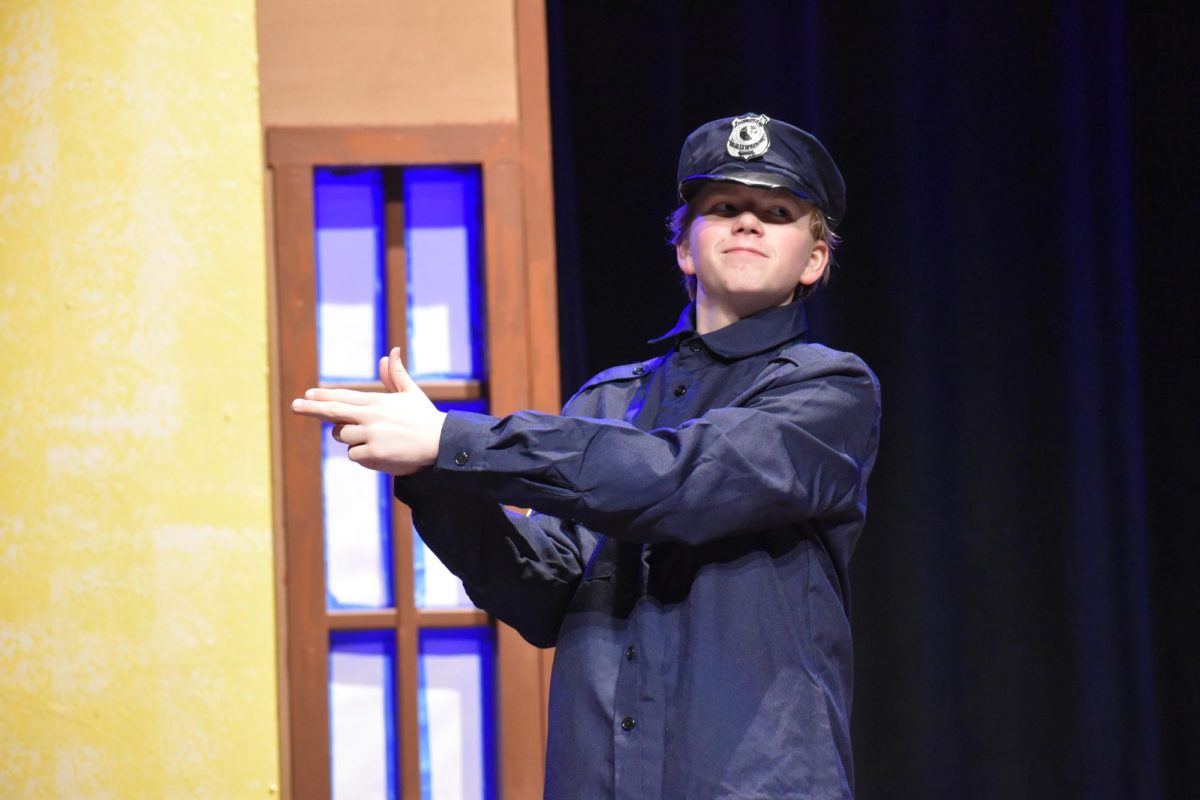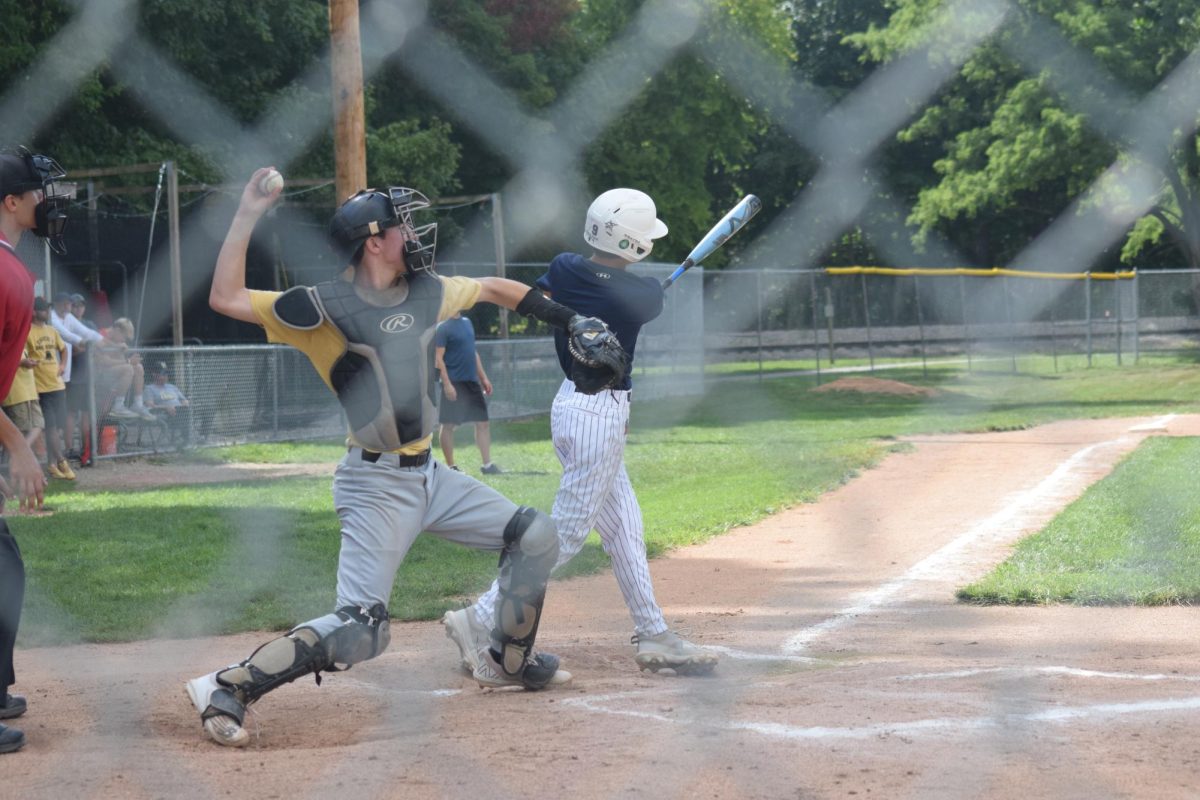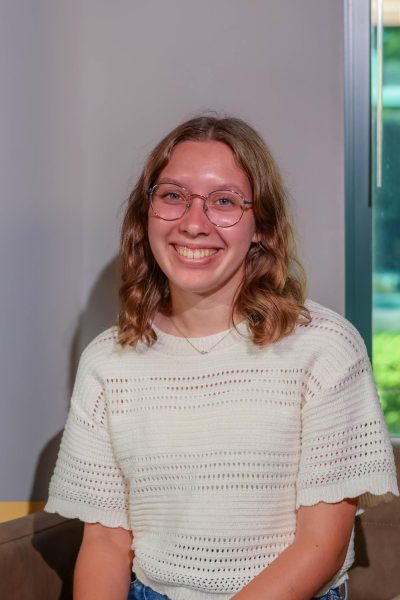With the body an album cover and the neck an old wrapping paper tube, David Hartman’s fingers strummed along the make believe strings of his new pretend guitar. In fourth grade, Hartman and his best friend discovered Rock n Roll. The two boys would pluck the strings of their air guitars for hours on end to the KISS Alive album in his best friend’s living room.
Since then, making music has been a constant in Hartman’s life. Today, he plays in five steady music groups—Charlie’s Pocket, The David Hartman Band, Rhythm 8, Mosaic, and a polka group—while also picking up other, more individual gigs in between, like playing guitar in the pit for a musical. On top of this busy schedule, he instructs and sponsors six different music programs as a teacher at NHS. While teaching wasn’t necessarily always his route, music was always at the core of his plans.
“Teaching is a career where I would still be involved in music twenty-four-seven. I felt like I was competent enough to teach it,” Hartman said. “At some point I made the switch from I’m a musician who teaches to I’m a teacher who plays music. And it became more about the students.”
Hartman’s students have noticed this perspective in him too. Senior Amy Schoonover has been in class with Hartman for all four years of her high school career and is involved in a variety of activities with him, including the Black and Gold Band, symphonic orchestra, and multiple guitar classes.
“Mr. Hartman is a fantastic teacher,” Schoonover said. “He cares about his students not only as his students, but also as people. From what I know, his student’s needs come first, and class comes second. I believe that’s a core value that every teacher should strive for.”
It is that emphasis on the students that really sticks out to Jason Jasper as well, a music teacher at NHS who also plays with Hartman in two groups outside of school. He explains why Hartman’s instruction is so effective.
“Mr. Hartman is a really kind and humble teacher,” Jasper said. “He definitely sets high expectations for his students and when they don’t meet those goals, he always meets his students where they’re at and helps them overcome their stumbling blocks.”
While helping students overcome obstacles is part of the job description for just about any teacher, Hartman explains that he has a unique perspective with it. Not only does he understand what is needed from an instructor’s point of view, he knows what it’s like to perform.
“In my own personal performance, I have to tackle practicing on a very limited time frame because I always have something going on,” Hartman said. “Especially for my guitar players, I truly understand what the difficulties are, from the very start to being performance ready.”
And even though being ‘performance ready’ is a highly subjective thing, Jasper explains that with Hartman’s decades of experience, very rarely is he unprepared. His motivation is clearly seen through his preparation and skill.
“Even though he is an incredible musician, his motivation is not for the purpose of showing off,” Jasper said. “It’s more like he’s just having so much fun playing wild [guitar] licks that [he] wants to share his own musical enjoyment and excitement with others.”
Schoonover, too, has seen this motivation in Hartman. But as a student, she is also able to see the balance that is necessary for the magic of music to be created.
“Some similarities I notice [between different groups] are his efforts to make music fun. From classical music, to rock music, to broadway music, he doesn’t overly focus on how the music sounds to the audience, but how he can instruct without putting pressure on us,” Schoonover said. “It’s a good balance between preparing to compete, and preparing to have music in our lives post high school.”
This preparation to continue and share music with his students but also the community is the core reason as to why Hartman plays all of the music that he does. He is even able to pinpoint the specific time in which that became apparent to him.
“Nothing makes me happier than when we finish that slow, pretty, or sad piece of music and there’s just that awkward silence, because nobody wants to break that energy,” Hartman said. “That’s the connection, the energy of the music. And for me, the most important thing is making those connections from what you’re doing as a musician or conductor of a group to your audience.”
For Hartman, that connection from the audience to the musicians to the music comes back over and over again. In his earlier days of playing in his band, Hartman realized how that connection brings the performance to another level.
“I was in a cover band that had been working for probably six months to start playing when we had our first gig. We played our first set, which was about an hour of music, and everything went exactly right. Every harmony, every solo, every vocal was good. And I just remember looking up after we finished the last song, asking, ‘What just happened?’” Hartman said. “Because that was really good. Those are the moments that I enjoy the most: when something happens that is bigger than the sum of its parts.”
Bridging the gap between performing and teaching music may seem difficult, but Hartman continues to come back to the idea of the product being even more than it seems. Finding this link throughout all of his musical endeavors, it ends up being the true, underlying reason Hartman makes all of the music that he does.
“For me, being a performer outside of the classroom is really important because it reminds me of the purpose of music performance and what it feels like when you play with a group of people for a common purpose,” Hartman said. “When you all are responsible for your part, and when everything comes together right, the sum is greater than all the parts. That’s humanity. That’s the human experience, when you work together and see that it takes all of us to get this done.”










